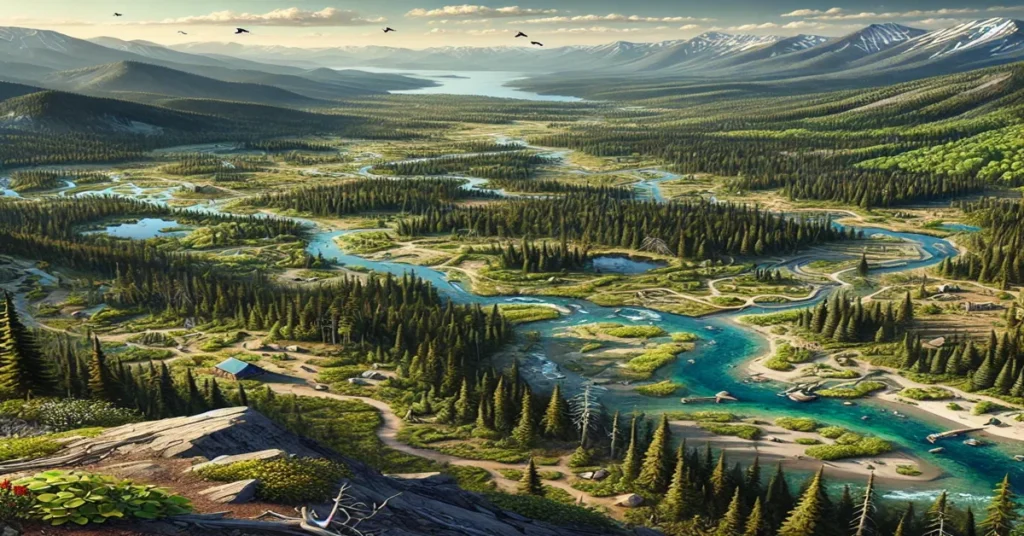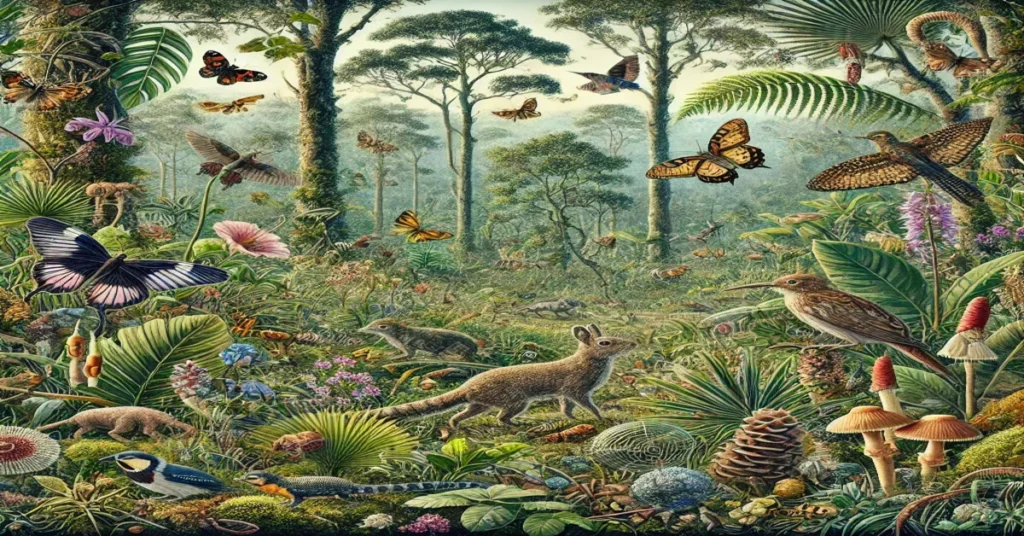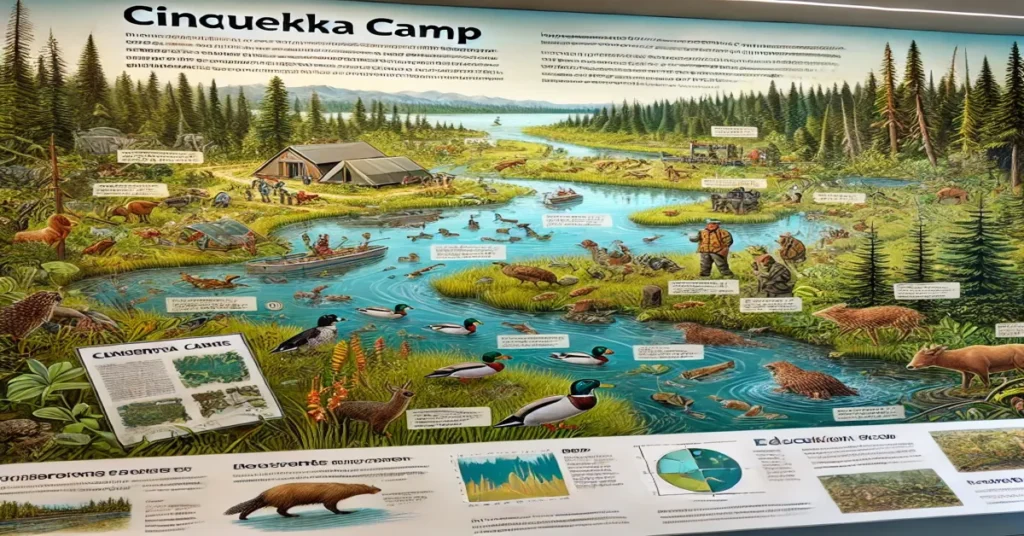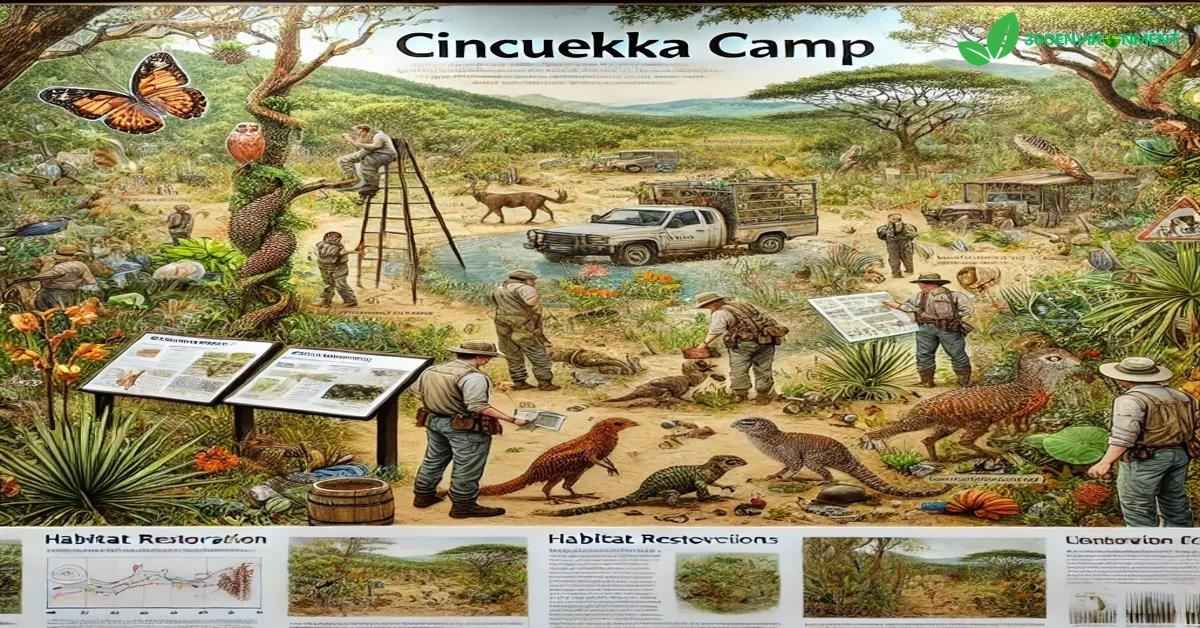Introduction
Cinquekka Camp is a unique natural retreat located in a picturesque environment, characterized by stunning landscapes and rich biodiversity. Nestled within the heart of nature, this camp offers an immersive experience for visitors while serving as a hub for environmental education, conservation efforts, and outdoor recreation. The camp is not just a place for recreation; it plays a vital role in promoting awareness of ecological issues, fostering a connection to nature, and supporting the local environment.
This article aims to explore the ecological significance of Cinquekka Camp, examining its natural features, biodiversity, recreational opportunities, challenges posed by human activities and climate change, and ongoing conservation initiatives. By understanding these aspects, we can appreciate the importance of Cinquekka Camp and its contributions to environmental stewardship and sustainability.
1. Geographic and Ecological Overview of Cinquekka Camp
Cinquekka Camp is set against a backdrop of diverse landscapes that contribute to its ecological significance. Understanding the geography and ecology of the camp is essential for appreciating its natural beauty and importance.

1.1. Geographic Features
- Location: It is situated in a region known for its stunning natural landscapes, including forests, mountains, rivers, and meadows. Its location provides access to various ecosystems and recreational opportunities, making it an attractive destination for nature enthusiasts.
- Terrain and Elevation: The camp is located at an elevation that varies throughout the surrounding area, contributing to a range of microclimates and ecological conditions. The diverse terrain includes rolling hills, dense forests, and open meadows, each supporting distinct plant and animal communities.
- Climate: The climate in the area surrounding it is characterized by seasonal variations, with warm summers and cold winters. This climate influences the types of flora and fauna found in the region and contributes to the overall ecological balance.
1.2. Ecological Characteristics
The ecological characteristics of Cinquekka Camp contribute to its biodiversity and overall health.
- Ecosystem Diversity: The camp is surrounded by a variety of ecosystems, including deciduous and coniferous forests, wetlands, and riparian areas. Each of these ecosystems supports unique plant and animal communities, contributing to the region’s rich biodiversity.
- Water Sources: Water bodies, such as streams and rivers, flow through or near Cinquekka Camp, providing essential resources for wildlife and contributing to the overall health of the ecosystem. These water sources also play a crucial role in nutrient cycling and habitat availability.
2. Biodiversity in Cinquekka Camp
Cinquekka Camp is home to a diverse array of flora and fauna, making it an important ecological area. Understanding the biodiversity present at the camp is key to appreciating its significance.

2.1. Flora of Cinquekka Camp
The plant life in it is diverse, with various species adapted to the different habitats within the area.
- Forest Vegetation: The forests surrounding the camp are dominated by a mix of deciduous and coniferous trees, including oak, pine, and maple. These trees provide habitat and food sources for numerous species, contributing to the overall health of the ecosystem.
- Understory Plants: The forest understory is rich with shrubs, ferns, and wildflowers, creating a layered habitat that supports a variety of wildlife. These plants are essential for maintaining soil health, preventing erosion, and providing shelter for animals.
2.2. Fauna of Cinquekka Camp
The biodiversity of Cinquekka Camp extends to its animal life, which includes a wide range of species.
- Bird Species: Cinquekka Camp is a haven for birdwatchers, with various bird species calling the area home. Common species include songbirds, raptors, and waterfowl, each playing a vital role in the ecosystem. The camp’s diverse habitats provide nesting sites and food sources for these birds.
- Mammals: The area is inhabited by various mammals, including deer, foxes, squirrels, and raccoons. These animals contribute to the ecological balance by participating in food webs and nutrient cycling.
- Reptiles and Amphibians: Cinquekka Camp’s diverse habitats support several reptile and amphibian species, such as frogs, toads, and snakes. These species play essential roles in controlling insect populations and serving as indicators of ecosystem health.
3. Ecological Importance of Cinquekka Camp
Cinquekka Camp serves several crucial ecological functions that benefit both the environment and local communities. Its significance extends beyond recreational opportunities, providing essential ecosystem services.

3.1. Water Quality and Filtration
The presence of water bodies near it contributes to water quality and ecosystem health.
- Natural Filtration: The vegetation surrounding streams and rivers acts as a natural filter, trapping sediments and pollutants before they enter the water. This process is essential for maintaining clean water and healthy aquatic ecosystems.
- Flood Control: Wetlands and riparian areas associated with Cinquekka Camp help absorb excess water during heavy rainfall, reducing the risk of flooding in surrounding areas. These ecosystems serve as buffers, helping to protect downstream habitats and communities.
3.2. Carbon Sequestration
Cinquekka Camp’s diverse ecosystems play a role in carbon sequestration, helping mitigate climate change.
- Carbon Storage: Trees and plants in the forests surrounding the camp absorb carbon dioxide from the atmosphere and store it in their biomass and soils. Protecting these areas is critical for enhancing their role in climate regulation.
- Soil Health: Healthy soils in Cinquekka Camp’s ecosystems store carbon and nutrients, supporting biodiversity and ecosystem resilience. Soil conservation practices are vital for maintaining these functions.
3.3. Biodiversity Support
Cinquekka Camp’s diverse ecosystems support a wide range of species, contributing to global biodiversity.
- Habitat Connectivity: The interconnectedness of different habitats within Cinquekka Camp enhances ecological resilience, allowing species to move and adapt in response to environmental changes. Maintaining habitat connectivity is crucial for preserving biodiversity.
- Endangered Species Protection: Some species in it may be threatened or endangered. Conserving their habitats helps protect these vulnerable populations and ensures the continuation of their ecological roles.
4. Challenges Facing Cinquekka Camp
Despite its ecological importance, Cinquekka Camp faces numerous challenges from human activities, climate change, and pollution. Understanding these challenges is crucial for implementing effective conservation measures.

4.1. Human Impact
Human activities have a profound impact on the health of Cinquekka Camp.
- Development Pressure: Increased development around the camp, including housing and infrastructure projects, can lead to habitat loss, fragmentation, and pollution. Urban encroachment disrupts the natural balance of ecosystems and threatens local wildlife.
- Recreational Pressure: While recreation is essential for connecting people to nature, excessive use can lead to habitat degradation, soil erosion, and pollution. Overcrowding at popular sites can disturb wildlife and damage delicate ecosystems.
4.2. Climate Change
Climate change poses significant challenges to the ecological health of Cinquekka Camp.
- Temperature Increases: Rising temperatures can alter the distribution of plant and animal species, impacting the ecological balance of the region. Some species may struggle to adapt to changing conditions, leading to population declines.
- Altered Precipitation Patterns: Changes in rainfall patterns can affect water availability for ecosystems in and around Cinquekka Camp. Droughts can reduce water levels, while heavy rainfall can lead to flooding and erosion.
4.3. Invasive Species
The introduction of invasive species can threaten the native flora and fauna of Cinquekka Camp.
- Competition for Resources: Invasive species often outcompete native plants for resources such as light, water, and nutrients. This competition can lead to declines in native biodiversity and disrupt local ecosystems.
- Altered Ecosystem Dynamics: Invasive species can change the structure and function of ecosystems, impacting food webs and nutrient cycling. Managing and controlling invasive species is crucial for protecting native biodiversity.
5. Conservation Efforts at Cinquekka Camp
To address the challenges facing Cinquekka Camp, various conservation efforts have been implemented to protect its ecosystems and biodiversity. These initiatives involve collaboration among government agencies, non-profit organizations, local communities, and researchers.

5.1. Habitat Restoration
Restoration projects aim to rehabilitate degraded habitats and enhance ecosystem health.
- Wetland Restoration: Efforts to restore wetlands can improve water quality, enhance habitat for wildlife, and increase resilience to climate change. These projects often involve re-establishing native plant communities and improving hydrology.
- Invasive Species Management: Programs to manage and control invasive species are essential for protecting native biodiversity. This may involve removing invasive plants, implementing monitoring programs, and restoring native vegetation.
5.2. Sustainable Land Management
Promoting sustainable land management practices is crucial for minimizing human impacts on Cinquekka Camp.
- Best Management Practices (BMPs): Implementing BMPs in recreational and agricultural areas can reduce nutrient runoff and minimize pollution. These practices may include buffer strips, cover crops, and proper waste management.
- Zoning Regulations: Local governments can establish zoning regulations that protect sensitive habitats and limit development near Cinquekka Camp. These regulations can help preserve the natural landscape and maintain ecological integrity.
5.3. Community Engagement and Education
Community involvement is vital for the successful conservation of Cinquekka Camp. Educating local residents about the importance of this ecosystem can foster a culture of stewardship and promote sustainable practices.
- Educational Programs: Environmental education programs can provide valuable information about Cinquekka Camp and its ecological significance. Incorporating lessons about local ecosystems into school curricula can help students develop an appreciationfor their environment. Field trips to Cinquekka Camp can offer hands-on learning experiences and encourage students to engage in conservation efforts.
- Community Workshops: Workshops and seminars can educate residents about sustainable practices, water conservation, and the importance of protecting local ecosystems. Engaging the community in discussions about environmental issues can foster a sense of responsibility and inspire action.
5.4. Volunteer Opportunities
Offering volunteer opportunities for community members can help connect people with their local environment and encourage active participation in conservation efforts.
- Clean-Up Events: Organizing clean-up events around Cinquekka Camp can remove debris and pollutants from the area, improving its overall health and aesthetic appeal. These events can also help raise awareness about the impact of littering on the environment.
- Restoration Projects: Engaging community members in habitat restoration projects allows them to contribute directly to the health of Cinquekka Camp. Activities such as planting native vegetation, building birdhouses, and restoring wetlands can make a positive impact on the ecosystem.
6. The Role of Policy and Governance in Protecting Cinquekka Camp
Effective policy and governance are essential for the conservation and protection of Cinquekka Camp. Collaborative approaches involving various stakeholders can enhance the sustainability of this vital ecosystem.

6.1. Regulatory Frameworks
Establishing regulatory frameworks to protect water quality, habitat, and biodiversity is crucial for the health of Cinquekka Camp.
- Environmental Regulations: Implementing strict environmental regulations can help safeguard natural resources in Cinquekka Camp. Regulations governing land use, pollution control, and habitat protection can ensure that ecosystems remain healthy and resilient.
- Wildlife Protection Laws: Enforcing laws that protect endangered and threatened species is vital for maintaining biodiversity. These laws can provide a framework for the recovery of vulnerable populations and their habitats.
6.2. Collaborative Governance
Collaborative governance approaches that involve multiple stakeholders can enhance the management of Cinquekka Camp.
- Stakeholder Engagement: Involving local communities, conservation organizations, government agencies, and scientists in decision-making processes fosters a sense of ownership and responsibility for the camp. Collaborative efforts can lead to more effective conservation outcomes.
- Integrated Management Strategies: Implementing integrated management strategies that consider the interconnectedness of land and water systems can improve the sustainability of Cinquekka Camp. This approach recognizes that healthy watersheds are essential for maintaining the health of ecosystems.
7. Conclusion: The Importance of Protecting Cinquekka Camp
Cinquekka Camp is a vital ecological resource that provides essential services and supports a rich tapestry of life. Its unique landscapes, diverse ecosystems, and cultural significance make it imperative to prioritize its conservation and sustainable management. By understanding the challenges it faces and implementing effective strategies, we can ensure that Cinquekka Camp remains a thriving ecosystem for generations to come.
As we reflect on the beauty and importance of this natural treasure, let us commit to fostering a deeper appreciation for Cinquekka Camp and taking action to protect the environments that enrich our lives. Through collaboration, education, and advocacy, we can create a sustainable future for Cinquekka Camp, ensuring that it continues to provide ecological benefits and recreational opportunities for all. Together, we can safeguard this remarkable landscape and the intricate web of life it supports.
Read More: Square Lake: A Comprehensive Environmental Overview of Minnesota’s Hidden Gem

